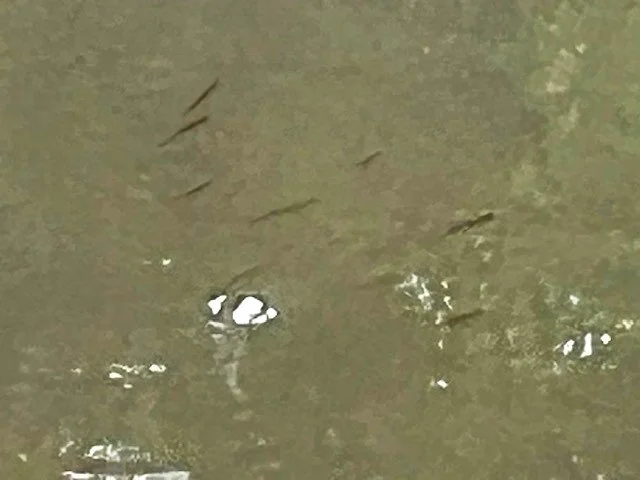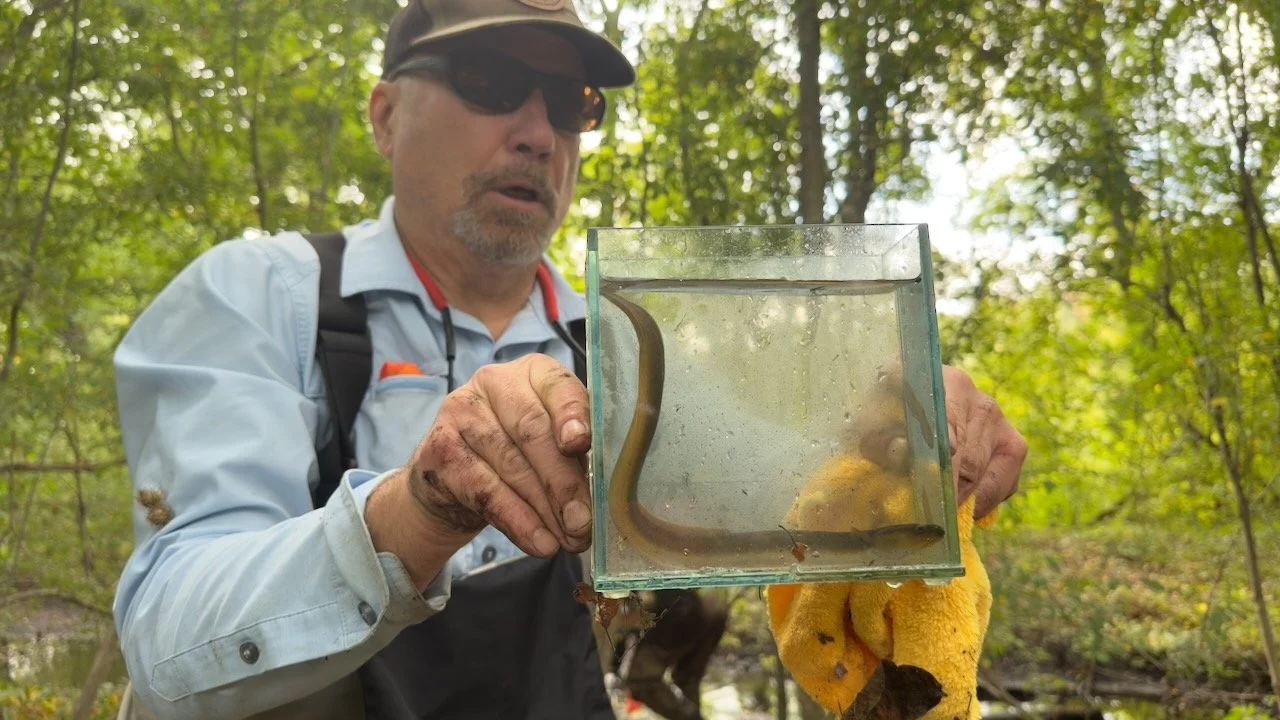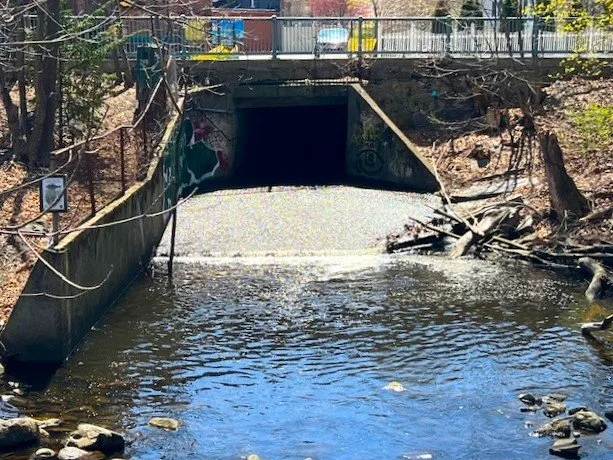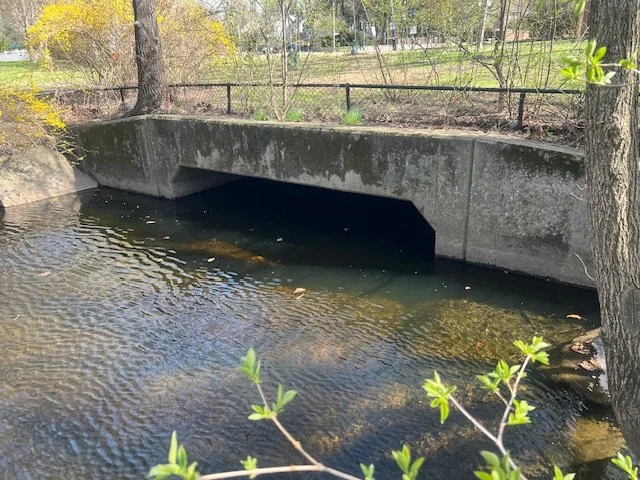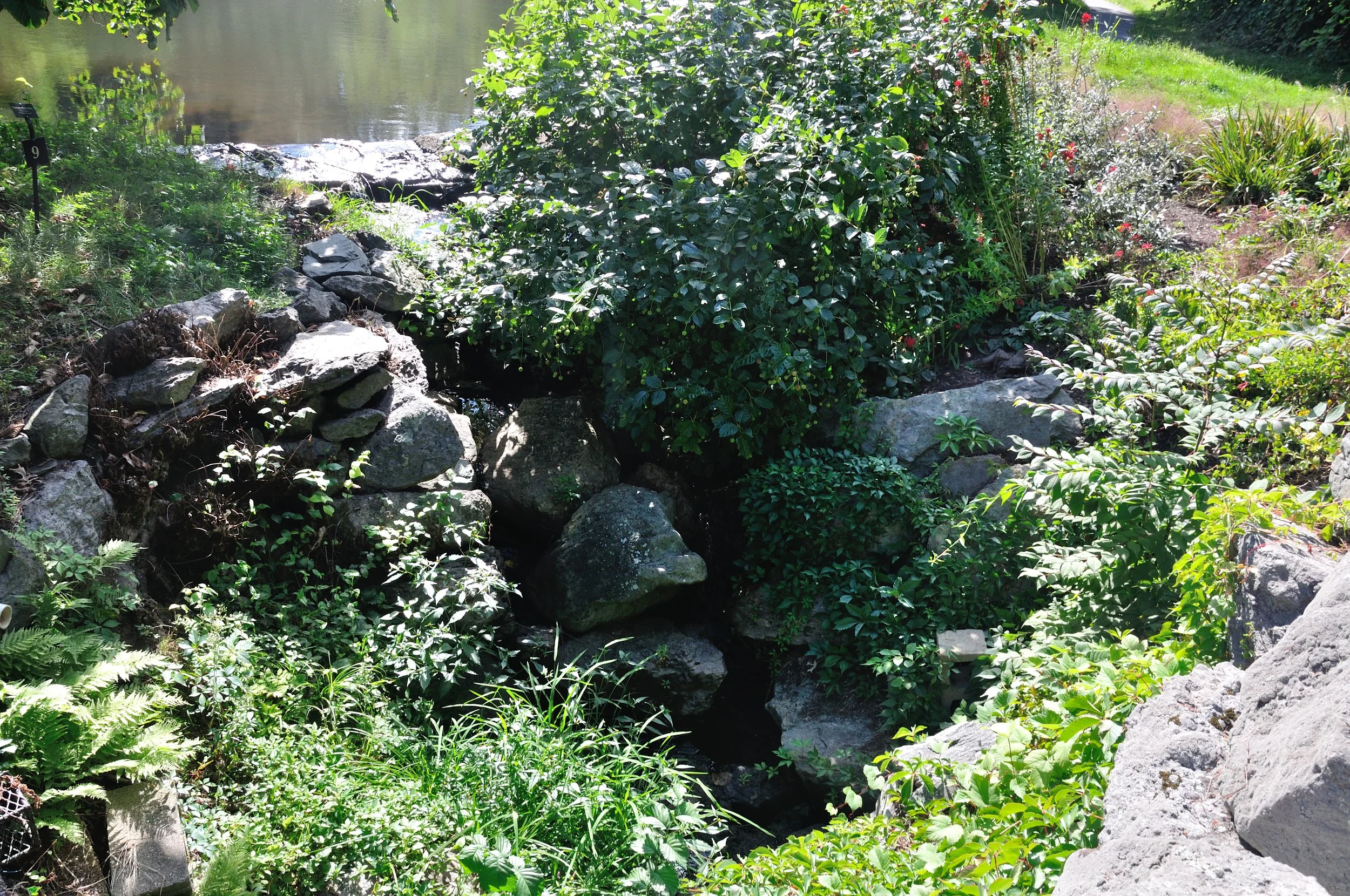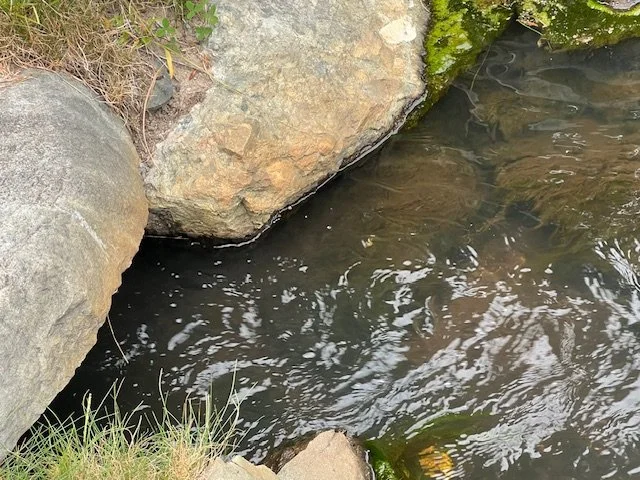Campaign Update: American Eel Confirmed in Cold Spring Brook...
Cold Spring Brook within Cold Spring Park in Newton, Massachusetts, is one of the most altered, degraded, and neglected sections of stream NFC has ever seen. If you were looking for a blueprint as to what not to do to a stream, Cold Spring Brook in Cold Spring Park is it. The stream, including its headwater spring, has been buried, culverted, straightened, dredged, and moved, and was long believed to be fishless by those most familiar with it…
The situation at Cold Spring Brook within Cold Spring Park changed notably when NFC was able to confirm the presence of multiple age classes of golden shiners. Fish were observed, trapped, and seined in multiple locations within the stream, its primary tributary, and a small pond connected to the stream, indicating that the shiners were self-sustaining and present throughout the system.
While golden shiners are native to the Charles River watershed, as the species of fish most commonly used for bait, it is possible that the population is the result of an earlier or even multiple release of unused bait. And as a generalist in regard to habitat, forage, and spawning, golden shiners are able to live in water that many other species of fish would be unable to.
Earlier stream sampling performed by NFC on Cold Spring Brook within Cold Spring Park using eDNA metabarcoding tested positive for the presence of American eel. Both the original test and a retest done to try to resolve some issues showed the same results. While apparently limited to the lower end of stream in the park only, NFC was excited to try to confirm the presence of eels using either species targeted eDNA or physical capture.
Unlike golden shiners which are a schooling species of fish, American eel are very solitary. They are also very piscivorous, feeding mostly on minnows and other aquatic lifeforms. This makes them difficult to trap or seine as you need to find them in order to do so, and their nocturnal nature, dark color, and ability to hide makes them hard to spot…
In order to try to confirm the presence of American eel in Cold Spring Brook within Cold Spring Park, NFC had two options: Targeted species eDNA or electro-fishing. While positive identification using targeted eDNA is considered a valid form of proof of presence, actual photographs are more convincing to those unfamiliar with eDNA.
NFC contacted Adam Kautza, Coldwater Fisheries Project Leader for Massachusetts Division of Fisheries and Wildlife, to see if he would be able to come to Cold Spring Park to do some e-fishing. While we warned Adam that it would not be easy due to the presence of several feet of decaying organic matter in the stream, he offered to come by and do some sampling.
As we had hoped, Adam and the group were able to shock two American eel in the lower end of Cold Spring Brook within Cold Spring Park. The first, a fish that looked to be in the 20-inch range, eluded capture and the group was unable to photograph it. But it was captured on video. Thankfully, a smaller specimen in the 14-15-inch range was able to be captured and photographed - see below…
Adam Kautza netting a large American eel from Cold Spring Brook. (Jon Goldberg)
(Above) Massachusetts NFC board member Jeff Moore with the smaller of two eels capturted. (Below) Adam Kautza shocking the larger eel. (Jon Goldberg)
The presence of American eel, a Species of Greatest Conservation Need in Massachusetts, in Cold Spring Brook within Cold Spring Park is notable for several reasons. First is that American eel are native to the Charles River watershed. And unlike golden shiners, it’s highly unlikely that anyone released eels into the stream. Second is that they are a catadromous species of fish that are born in the Atlantic Ocean in an area called the Sargasso Sea east of the Gulf Stream, but spend most of their lives in freshwater.
In order to get to Cold Spring Brook within Cold Spring Park, eels have to circumvent Charles River Dam in Boston, travel the river to just short of Watertown Dam, maneuver over a large cement slab at the base of Laundry Brook, travel close to 2 miles through culverted and buried stream, push through Bullough’s Pond, climb a small falls at the head of the pond, swim through several manmade ponds at Newton City Hall, navigate more buried stream, push through 3 more manmade ponds and a short section of stream in Newton Cemetery and Arboretum, then swim roughly 1,500 feet of buried stream before surfacing in the park. In total, these two eels had to travel more than 100 miles and through many obstructions to get to where they were captured…
Special thanks to Adam Kautza and brian means from MassWildlife for taking the time to e-fish with us, and MA NFC board members brian hutchison and Jeff Moore, and jon goldberg from friends of cold spring brook for stepping up to make this important event happen.
Left to Right: Brian Means and Adam Kautza of MassWildlife, Brian Hutchison from Massachusetts NFC, Jon Goldberg of Friends of Cold Spring Brook, and Jeff Moore from MA NFC…





